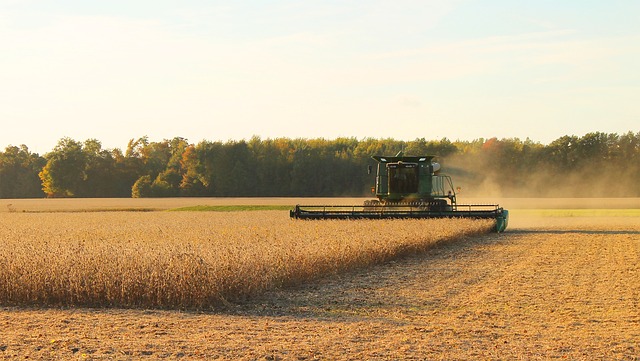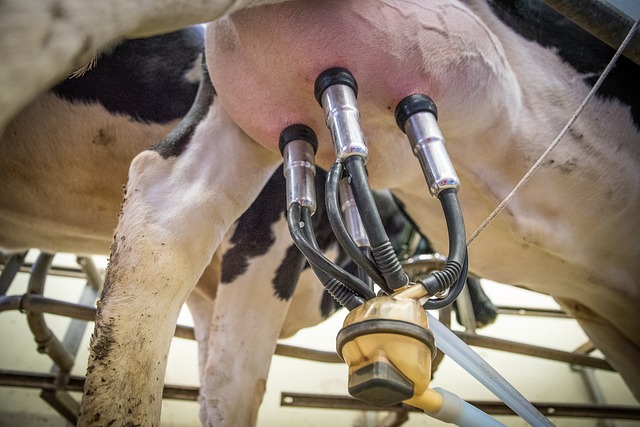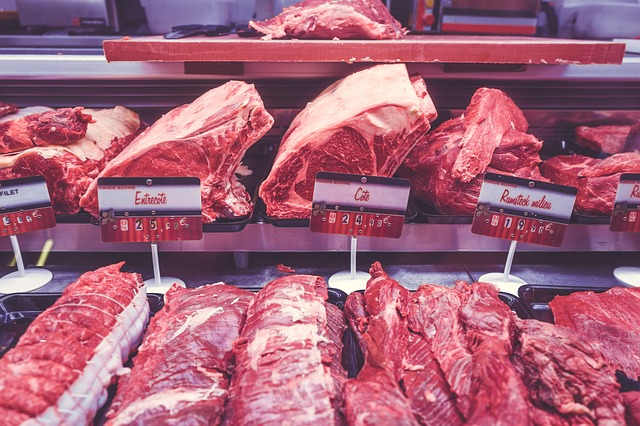The global spread of the coronavirus epidemic is significantly disrupting the functioning of agricultural markets. Operators fear a decrease in trade, while their most pressing problem is logistics. During the lockdown consumers have changed their eating habits in just a few weeks, which has profoundly modified domestic demand for food products.
This is an unprecedented situation. The governments of the world’s leading economies hope to stamp out the Covid-19 epidemic in a few weeks. If not, the health crisis will become an uncontrollable global economic and financial crisis. It will spread across the five continents, sustainably affecting agricultural commodity markets.
In early March, the fear of a brutal slowdown in trade and the fall in oil prices led to an immediate reaction on the grain markets.
In France, on the Rouen grain market, the prices of grains suddenly fell. On 6 March, a tonne of wheat was worth less than €180 and feed barley, less than €150.
In just a fe w days, global grain prices lost what they had gained since the end of last year. In Europe, the strengthening of the euro accentuated the drop in prices, making French grains less competitive.
w days, global grain prices lost what they had gained since the end of last year. In Europe, the strengthening of the euro accentuated the drop in prices, making French grains less competitive.
“The fear spread like wildfire through every marketplace on the planet when China, the world’s stomach, once again demonstrated its inability to take charge of the epidemic in time”, says the director of Agritel. “The coercive measures to halt it only added to the fear.”
In the US, “the fears linked to coronavirus and the drop in domestic demand for ethanol sparked speculative selling”, says the International Grains Council (IGC) in its monthly report published on 26 March. “The trade agreements for grains and soybeans between China and the US have broken down.”
Globally, in early March, a drop in grain trade over the next few months was looming. The volumes of grains that had not been exported by the end of June would have been stored. And the new 2020-2021 grain campaign would have been penalised straight away despite the good production forecasts announced by the IGC.
A crisis economy is taking hold
Whether there is a health crisis or not, the planet needs to eat. But since the start of March, it is eating differently and sometimes with difficulty.
“Increasingly significant logistical problems both for domestic transport and ports are causing operators to worry about difficulties supplying processing companies”, emphasises the IGC.
In addition, consumers have radically changed their eating habits. The demand for non-perishable foodstuffs has exploded while the agro-food industry is working at reduced capacity. It is dealing with various delivery problems and staff that are not always available.
Lastly, the IGC has maintained its forecasts for 2019-2020: 175 million tonnes (Mt) of wheat and 168 Mt of maize will be exported worldwide by the end of June. Many countries are seeking to cover their supplies.
So, since 16 March, grain prices have rapidly regained the ground lost two weeks earlier. On the Rouen grain market, the price of a tonne of wheat went up from €168 to over €190 on 27 March, while the tonne of feed barley rose from €145 to €166 and the tonne of maize from €151 to €163.
A real turnaround
Exports of grains are drying up. In Russia and the Ukraine, devaluations of the rouble and the hryvnia are making it more worthwhile to supply the domestic markets. Wheat prices have never been higher.
And despite the current crisis, which was both sudden and unprecedented, the grain production forecasts for 2020-2021, published on 26 March by the IGC, have unsettled operators. The risk of overproducing grains is no longer relevant.

Given the area under cultivation, the global harvest of wheat is estimated at 769 Mt (5 Mt more than last year) for consumption of 760 Mt (7 Mt more than last year). But over the past weeks, North Africa has stepped up its purchases of wheat and barley as the region is suffering from a massive rainfall deficit.
“In the Black Sea basin, the water shortage is showing no signs of ending and the pandemic’s impact on demand is difficult to analyse over the long-term”, analyses the IGC. And in the European Union, affected by storms, only 132 Mt of wheat will be produced (156 Mt in 2019) given the state of the crops and the smaller area sown than the year before.
What is more, the IGC predicts global production of 152 Mt of barley (175 Mt in 2019-2020) and 1,157 Mt of maize (1,116 Mt in 2019-2020). But outside China, only 900 Mt of maize will be harvested worldwide, of which 389 Mt in the United States (up 41 Mt year on year) where more is expected to be sown. However, the production of bioethanol is no longer profitable since the fall in oil prices.
What is more, 85 million acres of soybeans will be cultivated this ye ar compared with 76 million in 2019.
But the crop rotations were decided on in America before the Covid-19 health crisis when the economic and trade prospects were good. At the time, the price of a barrel of oil was more than 60 US dollars.
Livestock sectors suffering from multiple health crises
The dairy sector is feeling the full brunt of the Covid-19 health crisis. Admittedly, milk production has not yet been affected by the consequences of the Covid-19 epidemic, but the prices of low fat milk powder and butter have declined over the past few weeks.
However, controll ing the global production of milk will reduce the impact of the health crisis, so long as it does not carry on for more than a few weeks. According to Idele (French Livestock Institute), in New Zealand, the Fonterra cooperative will not lower the price of milk paid to its producers as the country will not produce less milk than the previous year.
ing the global production of milk will reduce the impact of the health crisis, so long as it does not carry on for more than a few weeks. According to Idele (French Livestock Institute), in New Zealand, the Fonterra cooperative will not lower the price of milk paid to its producers as the country will not produce less milk than the previous year.
Moreover, the European Union should produce 169 million tonnes of milk this year, up 1 million tonnes year on year. But its livestock breeders are not immune to a drop in the price of milk paid to producers if the situation deteriorates durably.
“The perspective of another global health crisis after the one caused by Covid-19 could change the solvency of the main importer countries, in particular oil producers. As a consequence, this could unbalance the global dairy product markets”, analyses Idele (Tendances Lait Viande (milk and meat trends) N°310-March 2020).
Due to a lack of markets over the next few weeks, the milk produced that is not consumed with be stored in the form of butter and powder. And certain importer countries may delay their purchases and wait for the prices of dairy products to reach their lowest point before returning to these markets.
The epidemic on the Silk Road
Faced with the Covid-19 health crisis, the global meat markets are reacting differently. For some livestock sectors, this new crisis has added fuel to the fire of the swine flu crisis in China, which has been affecting trade for months.
In China, the massive importation of pigs over the past months aimed to compensate the decline in pork production. But since the emergence of Covid-19, the Chinese economy has been frozen, leading to lower consumption of meat and logistics delays.
In Plérin, France, on the main national pork market, the price of a kilo of pork changes according to the spread of the Covid-19 epidemic from Asia to the European Union and no longer according to the declining Chinese imports of pork.
In the countries affected by a lockdown, more pork is being consumed in homes. The catering sector is at a standstill and many processing lines have slowed down. So the meat these sectors are not consuming is being put on the shelves in supermarkets, which also poses supply problems.
In sheep production, “the significant decrease in exports from New Zealand to China (-7%, i.e. 1,600 tonnes of carcass weight equivalent in January 2020/2019) is leading to a better supply of cheap mutton on the European market”, analyses Idele. Yet since the emergence of swine flu, the country has turned away from this as China is an important and lucrative nearby market.
In these circumstances, professionals in the sheep sector were already worrying this winter about an aborted recovery in lamb prices while the Easter holidays are approaching.
Like with pork, “we can expect catering industry consumption to shift to supermarkets, but this shift will probably penalise the consumption of lamb, which is mainly eaten outside of the home”, explains Idele.
The specific case of suckler beef
The beef sector has not been spared by the health crisis. Globally, it is too early to assess the impacts. In Europe, the markets for all the animals destined for mass catering are also being limited.
In Italy, where lockdown measures were implemented over a month ago, the health crisis is totally disrupting the trade of meat and live animals.
“With restaurants closed and Italian families having to stay at home un

til 3 April due to the closure of schools and universities, purchases in supermarkets and butcher’s shops are rising…”, analyses Idele in its sectoral report N°310 issued in March 2020.
“This shift to in-home consumption should benefit the meat from Fren
ch beef suckler calves fattened in Italy, which makes up the majority of volumes in supermarkets, a
nd French meat… But meat from other origins, like Polish meat mainly sold to the catering industry, risks being sold off cheaply which could lead to general pressure on prices.”
In France, the same thing has happened! The French population has started cooking again, for the moment just for the duration of the crisis.
In the short-term, the shift to consumption of meat and eggs often leads to shortages on supermarket shelves in the countries where a lockdown has been introduced. But the products that were destined for the catering industry are being redirected.
Globally, China is still the biggest importer of meat and poultry but once again the Covid-19 health crisis has wreaked havoc here as the demand is lessening. This means that the poultry usually exported to China will also have to find new markets.



